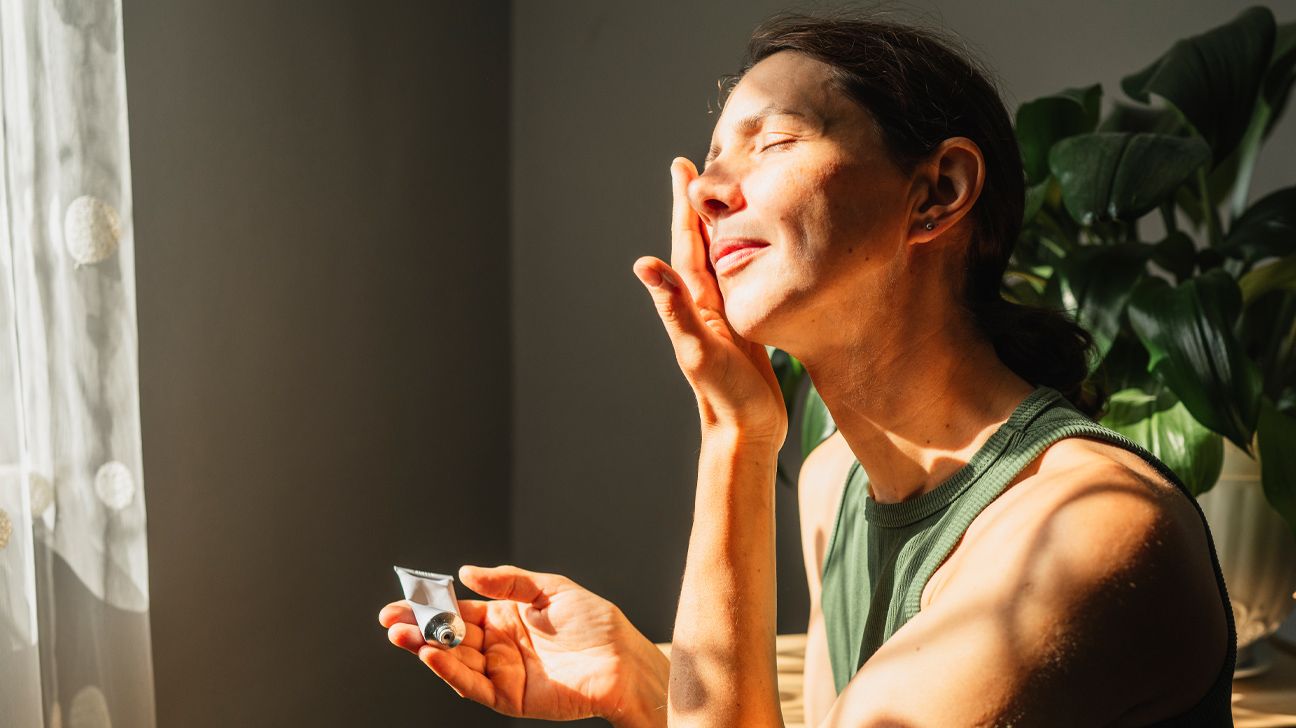You may develop menopausal acne as you go through the menopause transition. Breakouts may be due to hormone fluctuations or other causes. You can, however, treat menopausal acne with medication and lifestyle changes.

Menopause can change the way your skin appears and feels. Dry and itchy skin are common symptoms. Due to the hormone shifts during this period, menopausal acne can also occur.
Researchers aren’t exactly sure what may cause acne breakouts during menopause, but they hypothesize that it has to do with hormone levels.
Estrogen, a female sex hormone, fluctuates throughout perimenopause, but levels fall sharply after reaching menopause.
Levels of androgens, a male sex hormone of which females also have small amounts, tend to fall more gradually.
Androgens are responsible for sebum (oil) production. If androgens are produced in excess, it can cause increased sebum production, leading to clogged pores and acne.
As the imbalance between estrogen and androgens grows, postmenopausal hyperandrogenism (excess androgen secretion) may occur, and you may experience an acne breakout.
Beyond hormones, other factors can contribute to menopausal acne. Many are the same reasons for adult acne:
- cosmetics
- diet
- obesity
- smoking
- lack of sleep
- stress
- ultraviolet radiation (the sun, tanning beds)
- medications
Dry skin might also have a damaged skin barrier.
Your skin barrier acts as a shield between you and the environment. It helps keep bacteria from entering your pores and causing inflammation or infection, which can result in acne.
While menopausal acne and adult acne can appear in adulthood and share some features, both have other distinguishing features.
| Clinical features | Menopausal acne | Adult acne |
|---|---|---|
| Location | Mostly body, sometimes face | Mostly face, sometimes jaw and chin |
| Severity | Less | Moderate |
| Types of lesions | Deep inflammatory papules (rare) or nodules | Inflammatory papules (common) or pustules |
| Comedones | Macrocomedones (larger comedones) more common | May be present |
| Scarring | Depends on severity | Common |
| Sebum production | Can be increased | Increased |
| Other hyperandrogenic features | Hirsutism (excess hair growth), androgenic alopecia (hair loss), voice change more common | Less severe |
| Stress/depression | More severe | Less severe |
Treatment may vary depending on your:
- skin type
- the severity of acne
- your response to previous treatment (if any)
- associated features (if any)
Regardless, treatment aims to help improve acne, hyperpigmentation, and scarring with minimal irritation and side effects.
Topical therapies
Your options for topical therapies may include:
- Retinoids: Some, such as adapalene, are available over-the-counter (OTC), while others, such as tretinoin, require a prescription. Both have high efficacy for treating acne.
- Benzoyl peroxide: This helps kill acne-causing bacteria. Products with benzoyl peroxide are available OTC at different strengths. If you have sensitive skin, you might opt for a lower strength.
- Azelaic acid: Also available at prescription strengths (above 15%), azelaic acid can help with post-inflammatory hyperpigmentation and reduce acne.
- Dapsone: This prescription topical medication can help treat acne-causing bacteria and inflammation.
Speak with a dermatologist for their recommendations, as everyone’s skin is different and what works for someone else may not work for you.
Topical therapies typically need about 3 to 6 months before you start to see improvements with consistent use.
You might also consider speaking with an aesthetician about chemical peels and laser or light therapies.
Systemic therapies
Your options for systemic therapies may include:
- Spironolactone: This oral prescription medication is traditionally used as a diuretic, but may also help with acne by blocking androgen receptors.
- Flutamide: This oral prescription medication helps block androgen receptors and can be used to treat acne, hirsutism, and alopecia.
- Hormone therapy: Oral contraceptives, such as those with combined estradiol and progestins, may help treat mild to moderate acne by reducing ovarian androgen production and decreasing sebum production.
- Isotretinoin: Isotretinoin is an oral prescription medication. While it is often effective, it may cause severe side effects.
- Antibiotics: These can help kill acne-causing bacteria. But you’ll need to follow your doctor’s orders, as antibiotic resistance may occur.
It can also take up to 6 months or more before you start to see results from acne medications. Remember to be patient with yourself and your skin during this time. Healthy skin awaits on the other side.
While many treatments are available, they may not be suitable for everyone or may have serious side effects.
Speak with your doctor, dermatologist, or a Menopause Society Certified Practitioner for their recommendations.
You can also try to make some lifestyle changes:
- Eat a balanced diet.
- Get enough quality sleep (older adults need 7 to 8 hours).
- Exercise for at least 30 minutes most days.
- Learn how to best manage your stress.
- Avoid smoking, or speak with your doctor about smoking cessation.
- Maintain a moderate weight, which the points above can support.
- Keep your skin care routine simple.
Menopause can change your skin. It may become dry and itchy, and break out in acne. Researchers think menopausal acne may be related to hormone imbalances.
It is, however, possible to treat menopausal acne with medications and lifestyle changes. Speak with your doctor, dermatologist, or a Menopause Society Certified Practitioner for more guidance.
They can provide treatment recommendations and prescriptions for medications to help relieve acne. Some lifestyle changes may also help.



